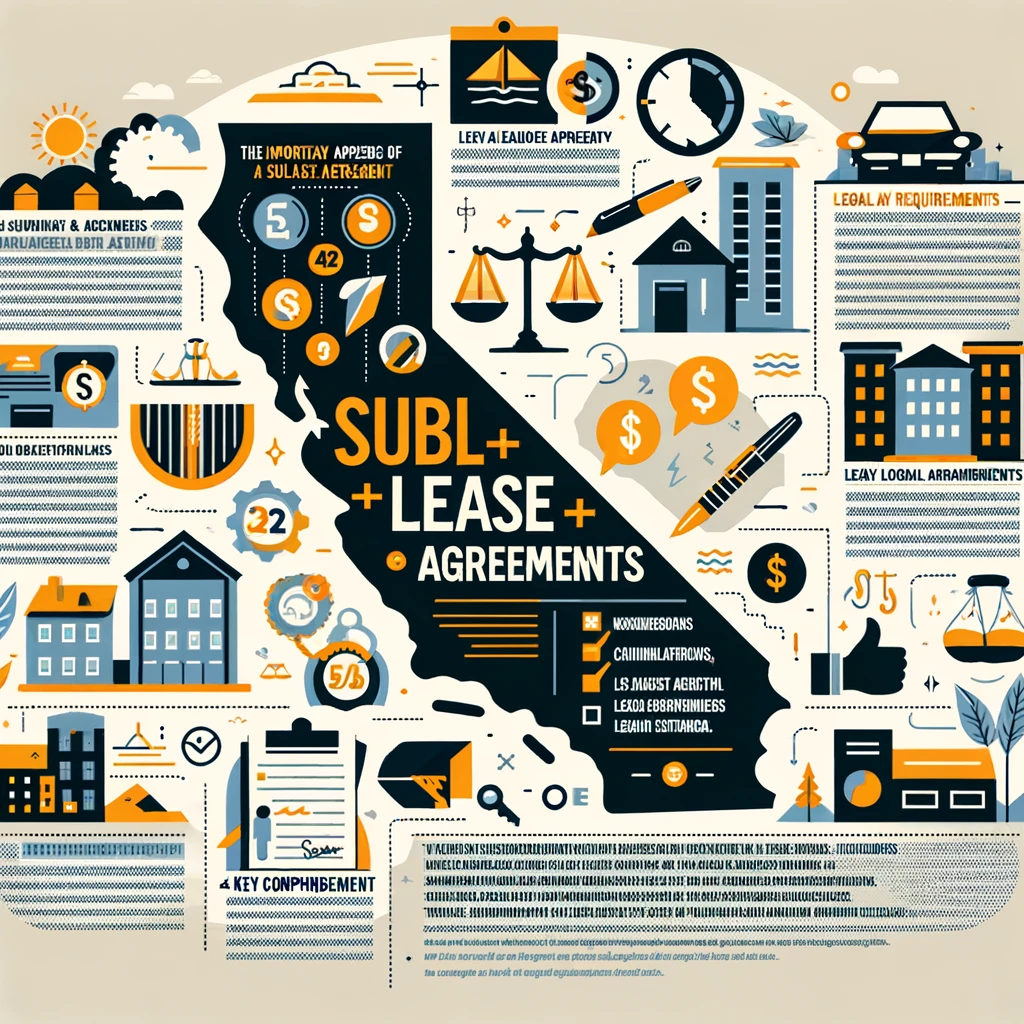The Ultimate Guide to California Sublease Agreement Templates
Introduction
In California, subleasing is a common practice among tenants seeking flexibility with their leasing arrangements. Whether it's due to travel, relocation, or changes in living situations, a sublease agreement allows the original tenant (sublessor) to rent out their leased premises to a new tenant (sublessee). This guide explores the essentials of sublease agreements in California, highlighting legal considerations, key components of a sublease agreement, and best practices for drafting an effective document.

Understanding Sublease Agreements in California
Subleasing involves three parties: the landlord, the original tenant (sublessor), and the new tenant (sublessee). It's imperative that the original lease agreement permits subleasing, and in many cases, landlord approval is required.
Legal Framework for Subleasing
California law permits subleasing unless expressly prohibited by the original lease agreement. It's crucial for tenants to review their lease and obtain written consent from the landlord if necessary. The California Department of Consumer Affairs offers guidance on tenant rights and subleasing.
Benefits of a Sublease Agreement
For sublessors: Subleasing can provide financial relief by covering rent costs when they are unable to occupy the premises.
For sublessees: Subleasing offers a chance to find housing in desirable areas without committing to a standard lease term.
Further reading on the benefits can be found through Wikipedia and various real estate blogs.
Key Components of a Sublease Agreement
A comprehensive sublease agreement template for California should include the following elements:
Identification of Parties and Property
Clearly state the names of the sublessor, sublessee, and landlord, along with the address and description of the rental property.
Term of Sublease
Specify the start and end dates of the sublease term, ensuring it does not exceed the term of the original lease.
Rent and Utilities
Detail the rent amount, due dates, and responsibilities for utilities and other expenses.
Security Deposit
Outline the amount, terms for return, and conditions that might warrant deductions from the security deposit.
Landlord's Consent
Include a section confirming the landlord's consent to the sublease arrangement, if applicable.
Conditions of Occupancy
Describe the permissible use of the property, restrictions (if any), and maintenance responsibilities.
For templates and further details, resources like the California Courts and educational websites such as Stanford University's Off-Campus Housing guide can be helpful.
Legal Considerations and Compliance
Ensuring compliance with California's rental laws and the original lease terms is crucial for a valid sublease agreement.
Rent Control Laws
Be aware of local rent control ordinances that may affect the terms of your sublease, especially in cities like San Francisco or Los Angeles.
Tenant Rights and Obligations
Both sublessors and sublessees should understand their rights and obligations under California law, including privacy rights, repair and maintenance duties, and eviction procedures.

Create & Review Your Contracts 10x Quality and Ease
Lawyer-level AI handles all your contract needs, with real lawyers providing safeguarding support

Best Practices for Drafting a Sublease Agreement
Clarity and Detail
A well-drafted agreement should leave no room for ambiguity. Be clear and detailed in describing the terms and conditions of the sublease.
Legal Review
Consider having the agreement reviewed by a legal professional specializing in California real estate law to ensure compliance and address any potential issues.
Digital Tools and Templates
Utilize online resources and templates as a starting point but customize them to fit your specific situation. Websites like LegalZoom and Rocket Lawyer provide customizable legal documents.
Conclusion
A sublease agreement is a critical document for tenants looking to sublease their rented property in California. By understanding the legal framework, including essential components, and adhering to best drafting practices, parties can ensure a successful and legally sound subleasing arrangement. Always seek professional advice when in doubt, and use authoritative resources to stay informed about the latest laws and regulations affecting subleasing in California.

